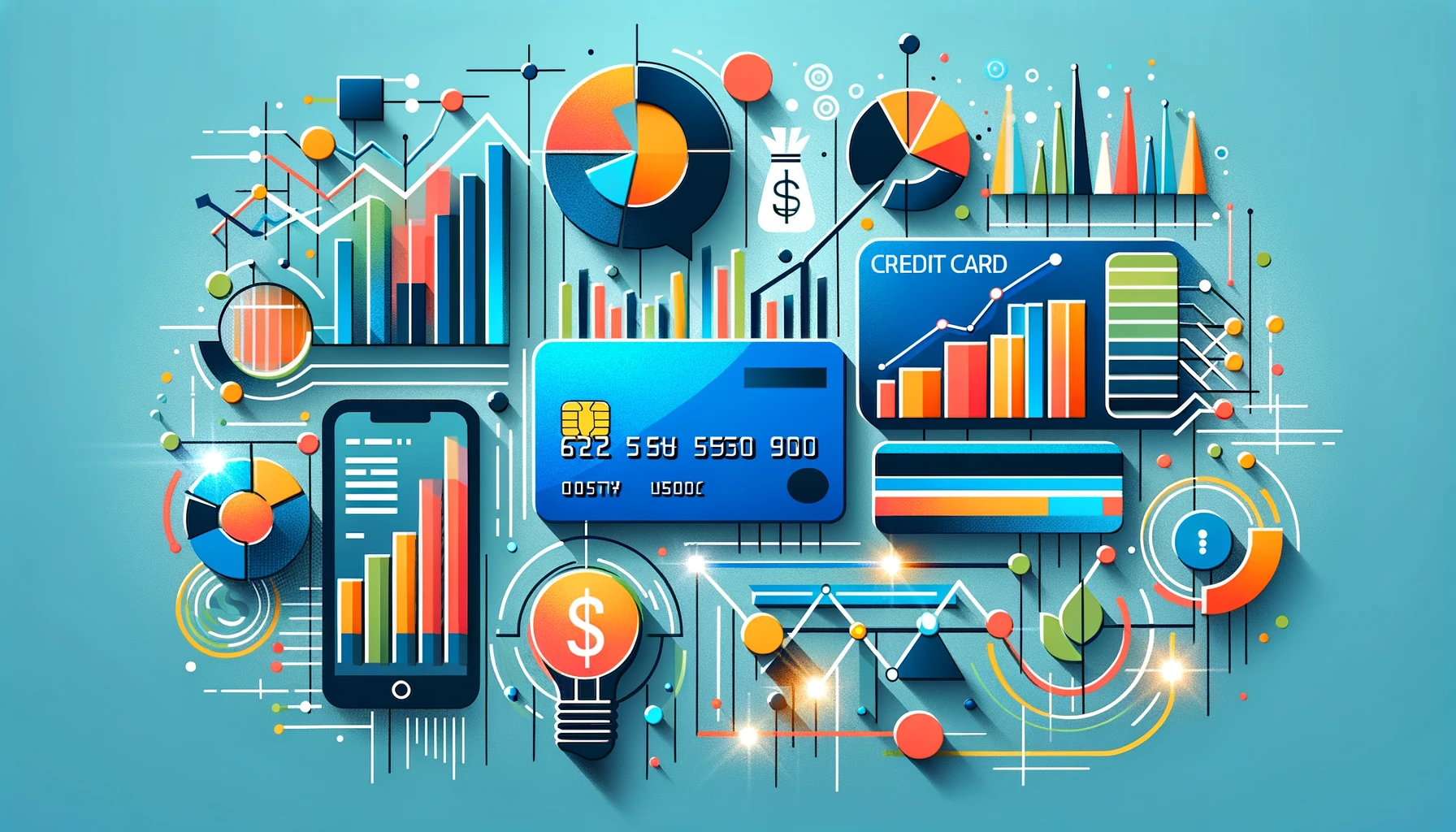Financial literacy is a crucial skill for students to develop as they navigate the world of personal finance. In this comprehensive credit card worksheet, we will cover key topics such as understanding credit cards, financial ratios and decision making, secured vs. unsecured loans, and credit score management. By the end of this worksheet, students will have a solid foundation in managing credit responsibly and making informed financial decisions.
Key Takeaways
- Understanding the differences between credit and debit cards is essential for financial literacy.
- Knowing the types of credit cards available and how to manage credit card offers can help students make informed choices.
- Calculating financial ratios can provide insights into financial decision making and creditworthiness assessment.
- Researching secured and unsecured loans is crucial for determining appropriate loan amounts.
- Maintaining a good credit score and understanding credit card management are key aspects of responsible financial behavior.
Understanding Credit Cards
Differentiating Credit and Debit Cards
Understanding the distinction between credit and debit cards is crucial for financial literacy. Credit cards offer the ability to borrow funds from the card issuer up to a certain limit, to be repaid at a later date, often with interest. In contrast, debit cards allow you to spend money by drawing on funds you already have in your bank account.
When using a credit card, you’re essentially taking out a short-term loan for each purchase, which can affect your credit score and financial health if not managed properly.
Here’s a quick comparison to highlight the differences:
- Credit Cards: Spend now, pay later. Interest may apply.
- Debit Cards: Spend only what you have. No interest charges.
It’s important to be aware of the consequences of not paying back credit on time, which can include late fees and damage to your credit score. Additionally, always safeguard your personal information to prevent identity theft.
Types of Credit Cards
Credit cards come in various forms, each designed to suit different financial needs and spending habits. Understanding the types of credit cards available is crucial for making informed decisions and managing finances effectively.
- Standard Credit Cards: These are the most common type of credit cards, offering a simple line of credit with no special features or rewards.
- Rewards Credit Cards: These cards offer rewards such as cash back, travel points, or other perks based on the amount you spend.
- Balance Transfer Credit Cards: Ideal for consolidating debt, these cards often come with a low introductory interest rate for transferring balances from other cards.
- Student Credit Cards: Specifically designed for students, these cards usually have lower credit limits and may offer rewards tailored to younger consumers.
- Secured Credit Cards: Require a security deposit and are often used by individuals looking to build or repair their credit history.
When evaluating credit card offers, pay close attention to the terms and conditions, including interest rates, fees, and credit limits. It’s also important to consider how a card’s features align with your spending patterns and financial goals.
Some credit cards offer additional benefits such as a no annual fee, exclusive events, or innovative payment features. For example, certain cards may provide bonus points for supermarket purchases or access to a rewards program that includes Amex Offers. Always review the card information carefully to ensure it meets your needs.
Managing Credit Card Offers and Debt
When evaluating credit card offers, it’s crucial to scrutinize the terms and conditions, as well as understand the consumer protection laws that apply. Managing a credit card effectively involves several key steps:
- Review offers carefully: Look for interest rates, fees, rewards, and penalties.
- Compute the debt-to-limit ratio: This ratio helps you understand how much debt you’re carrying in relation to your total credit limit.
- Understand financial ratios: Common financial ratios can guide your decision-making and assess your creditworthiness.
Remember, managing credit card debt is not just about paying bills on time; it’s about making informed choices that align with your financial goals.
Always be aware of the consequences of paying back credit past the due date, as this can significantly impact your credit score. Additionally, be vigilant about identity theft and safeguard your personal information diligently.
Financial Ratios and Decision Making
Calculating Financial Ratios
Financial ratios are essential tools for assessing a student’s financial health and creditworthiness. Calculating these ratios provides insight into one’s financial stability and ability to manage debt effectively. For students, understanding and applying these ratios can be a critical step in financial planning.
To begin, one must identify the common financial ratios relevant to personal finance. These include the debt-to-income ratio, which compares your monthly debt payments to your gross monthly income, and the debt-to-limit ratio, which measures the amount of credit you are using relative to your credit limit.
Here’s a simple table to help you start calculating your own financial ratios:
| Ratio Type | Formula | Description |
|---|---|---|
| Debt-to-Income Ratio | Total Monthly Debt / Gross Income | Measures debt burden relative to income. |
| Debt-to-Limit Ratio | Total Debt / Total Credit Limit | Indicates the percentage of available credit used. |
By regularly monitoring these ratios, students can make informed decisions about their spending and borrowing, ensuring they maintain a healthy financial profile.
Impact on Financial Decision Making
Financial ratios are crucial tools that aid individuals in making informed financial decisions. By analyzing these ratios, one can assess the health of their finances and determine the best course of action for their economic situation. For instance, a high debt-to-income ratio might signal the need to reduce spending or increase income to avoid potential financial distress.
Financial decision making is not just about the numbers; it’s about understanding the implications of those numbers on your future financial state.
Creating a balanced budget is essential in managing financial risk and achieving financial goals. It involves evaluating needs versus wants, understanding opportunity costs, and crafting a budget that accounts for spending, saving, and giving. Here’s a simple list to guide you through this process:
- Evaluate your needs and wants to prioritize spending.
- Define and apply opportunity cost to purchases.
- Create a risk management plan for potential financial barriers.
- Develop a balanced budget that includes provisions for unexpected expenses.
Understanding these concepts and applying them to everyday financial decisions can protect against unwanted risks, such as credit card fraud or impulse buying, and pave the way for a secure financial future.
Creditworthiness Assessment
Assessing creditworthiness is a critical step in financial management, as it influences the terms and conditions of credit that one can access. Creditworthiness is determined by a variety of factors, including credit history, income stability, and debt-to-income ratio. Lenders use this assessment to gauge the risk associated with lending money or extending credit.
To effectively evaluate creditworthiness, individuals should:
- Review their credit reports for accuracy and dispute any errors.
- Understand their credit scores and the factors that affect them.
- Calculate their debt-to-income ratio to ensure it remains at a manageable level.
It’s essential to maintain a healthy financial profile to secure favorable credit terms and avoid high-interest rates or loan rejections.
When considering credit card offers, such as the Business Advantage Unlimited Cash Rewards Credit Card, it’s important to weigh the benefits against potential risks. This card offers a $300 signup bonus, 1.5% cash back on all purchases, no annual cap, flexible redemption options, and 0% intro APR for 9 billing cycles. However, always read the fine print and consider how a new credit account will affect your credit score and overall financial health.
Secured vs. Unsecured Loans
Researching Installment Loans
When delving into the world of installment loans, it’s crucial to understand the distinction between secured and unsecured options. Secured loans require collateral, such as a car or home, which the lender can claim if you default on the loan. Unsecured loans, on the other hand, do not require collateral and are often based on your creditworthiness.
Before applying for an installment loan, consider the following steps:
- Research the lender’s background and reputation.
- Compare interest rates and terms from multiple sources.
- Assess your ability to meet the repayment schedule.
- Understand the implications of securing the loan with personal assets.
It’s essential to thoroughly evaluate the terms and conditions of any loan agreement to avoid future financial pitfalls.
Various credit card forums and websites offer resources for credit repair, financial advice, and maximizing rewards. Community-driven platforms empower users to make informed decisions and navigate credit complexities.
Determining Loan Amounts
When considering a loan, it’s crucial to determine the amount you can responsibly borrow. This involves evaluating your financial situation, including income, expenses, and existing debt. A well-calculated loan amount ensures that you can meet your financial goals without overextending yourself.
To start, list your monthly income and expenses to understand your disposable income. Then, consider the purpose of the loan. For instance, if you’re looking to finance a car, calculate the long-term costs, such as insurance and maintenance, in addition to the purchase price. Use the following table to organize your findings:
| Item | Monthly Cost | Annual Cost |
|---|---|---|
| Loan Repayment | $XXX | $XXXX |
| Insurance | $XX | $XXX |
| Maintenance | $XX | $XXX |
| Total Cost of Ownership | $XXX | $XXXX |
Remember, the loan amount should not exceed your capacity to repay while maintaining a comfortable lifestyle. Factor in potential changes in income or expenses, and always have a contingency plan for unforeseen events.
Finally, assess the terms and conditions of the loan, including the interest rate and repayment period. This will help you understand the total cost of the loan and how it fits into your financial plan.
Credit Score and Management
Maintaining a Good Credit Score
Maintaining a good credit score is essential for financial health and access to better loan terms. Regularly monitoring your credit report for errors and fraudulent activity is a proactive step towards ensuring your credit score remains intact. It’s also important to manage credit card receipts effectively; this aids in financial organization and prevents discrepancies.
- Pay bills on time to avoid late fees and negative marks on your credit history.
- Keep credit card balances low to maintain a favorable credit utilization ratio.
- Limit the number of new credit applications to prevent excessive hard inquiries.
Managing credit card receipts is crucial for financial organization. Keep receipts for returnable items until the return period ends. Regularly reconcile receipts for accuracy and maintain a clear financial overview.
Damage to Credit
Your credit score is a reflection of your financial reliability. Late payments, defaulting on loans, and carrying high balances can all lead to a damaged credit score. It’s crucial to understand the actions that can harm your credit, as they have long-term consequences.
- Late Payments: Even a single late payment can negatively affect your credit score.
- High Credit Utilization: Using a significant portion of your available credit can signal to lenders that you’re a high-risk borrower.
- Defaulting on Loans: Failing to repay loans as agreed can result in a major credit score drop.
- Applying for Multiple Credit Lines: Each application can result in a hard inquiry, which may lower your score.
Maintaining a healthy credit score requires discipline and awareness of financial habits. Avoiding the pitfalls that lead to credit damage is essential for financial stability and access to better loan terms in the future.
Credit Card Management
Effective credit card management is crucial for maintaining financial health and a good credit score. It involves understanding the terms and conditions, as well as consumer protection laws, to make informed decisions. Regularly evaluating credit card offers and being selective can prevent overwhelming debt.
To manage your credit card effectively, consider the following steps:
- Review your credit card statements carefully each month.
- Pay your bills on time to avoid late fees and damage to your credit score.
- Keep your debt-to-limit ratio low; this is computed by dividing your total credit card debt by your total credit limit.
- Stay informed about your credit score and take steps to improve it if necessary.
Remember, managing your credit card is an ongoing process that requires vigilance and discipline. By adhering to these practices, you can ensure that your credit remains in good standing.
If you encounter issues with your credit card, such as a demagnetized strip, it’s important to know how to address them safely. Avoiding magnetic items and using a card holder can prevent demagnetization. Temporary fixes like clear tape may work, but applying for a new card is the permanent solution.
Conclusion
In conclusion, financial literacy is a crucial skill for students to develop in order to navigate the complexities of credit cards and personal finance. By understanding concepts such as creditworthiness, debt-to-limit ratio, and financial ratios, students can make informed decisions about managing credit and making sound financial choices. This comprehensive credit card worksheet serves as a valuable resource for educators to empower students with the knowledge and skills needed to achieve financial success.
Frequently Asked Questions
What is the difference between credit and debit cards?
Credit cards allow you to borrow money up to a certain limit, while debit cards are linked directly to your bank account for immediate payment.
How many types of credit cards are there?
There are various types of credit cards, including rewards cards, secured cards, and balance transfer cards.
How can I manage credit card offers effectively?
To manage credit card offers, compare interest rates, fees, rewards, and terms before choosing the best option for your financial situation.
What is the debt-to-limit ratio and how is it calculated?
The debt-to-limit ratio, also known as credit utilization, is the amount of credit you are using compared to your total credit limit. It is calculated by dividing your credit card balance by your credit limit and multiplying by 100 to get a percentage.
How can I maintain a good credit score?
To maintain a good credit score, make timely payments, keep credit card balances low, avoid opening multiple new accounts rapidly, and regularly monitor your credit report for errors.
What are the consequences of damaging your credit?
Damaging your credit can lead to higher interest rates, difficulty in obtaining loans or credit cards, and negative impacts on your financial opportunities and future borrowing ability.



